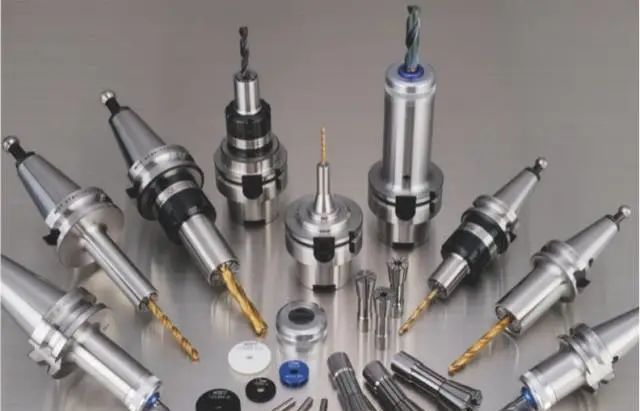What does 7:24 in BT hilt mean? What are the standards of BT, NT, JT, IT, CAT? Nowadays, CNC machining tools are widely used in factories. These machines and tools come from all over the world, with different models and standards.
Today, I would like to talk with you about the knowledge of machining center tool holders.
The tool holder is the connection between the machine tool and the tool. The tool holder is a key link that affects the concentricity and dynamic balance. It must not be regarded as a general component.
Concentricity can determine whether the cutting amount of each cutting edge part is uniform when the tool rotates once; dynamic imbalance will produce periodic vibration when the spindle rotates.
- According to the spindle taper hole, it can be divided into two categories
According to the taper of the tool hole of the machining center spindle, it is usually divided into two categories:
SK universal holder with 7:24 taper
HSK vacuum shank with 1:10 taper
SK universal holder with 7:24 taper
7:24 refers to the shank taper of 7:24, which is positioned for a separate taper surface, and the taper shank is longer.
The surface of the cone has two important functions at the same time, namely the precise positioning of the tool holder relative to the spindle and the realization of tool holder clamping.
Advantage:
Without self-locking, the tool can be quickly loaded and unloaded; as long as the taper angle is machined to a high degree of precision in the manufacture of the tool holder, the connection accuracy can be guaranteed, so the cost of the tool holder is relatively low.
Shortcoming:
When the spindle rotates at high speed, the taper hole at the front end of the spindle will expand. The amount of expansion increases with the increase of the rotation radius and the rotation speed, and the taper connection stiffness will decrease. Under the action of the pulling force of the tie rod, the axial displacement of the tool holder will also changes happened. After each tool change, the radial dimension of the tool holder will change, and there is a problem of unstable repeat positioning accuracy.
Universal shank with 7:24 taper
There are generally five standards and specifications:
- International Standard IS07388/1 (referred to as IV or IT)
- Japanese Standard MAS BT (BT for short)
- German standard DIN 2080 type (referred to as NT or ST)
- American Standard ANSI/ASME (CAT for short)
- DIN 69871 type (referred to as JT, DIN, DAT or DV) tightening method:
The NT type tool holder is used to tighten the tool holder through a pull rod on a traditional machine tool, which is also called ST in China; the other four tool holders are all tightened by the pull stud at the end of the tool holder on the CNC machining center.
Versatility:
1) At present, the two most used tool holders in China are DIN 69871 type (ie JT) and Japanese MAS BT type;
2) The tool holder of DIN 69871 type can also be installed on the machine tool with ANSI/ASME spindle taper hole;
3) The tool holder of the international standard IS07388/1 can also be installed on the machine tool of the DIN 69871 type and ANSI/ASME spindle taper hole, so in terms of versatility, the tool holder of the IS07388/1 type is the best.
HSK vacuum shank with 1:10 taper
The HSK vacuum tool holder relies on the elastic deformation of the tool holder, not only the 1:10 tapered surface of the tool holder and the 1:10 tapered surface of the machine tool spindle hole, but also the flange surface of the tool holder and the spindle surface are in close contact. The surface contact system is superior to the 7:24 universal tool holder in high-speed machining, connection rigidity and coincidence accuracy.
HSK vacuum tool holder can improve the rigidity and stability of the system and the product accuracy during high-speed machining, and shorten the time for tool replacement. HSK tool systems are being widely used in aerospace, automotive, precision mold and other manufacturing industries.

